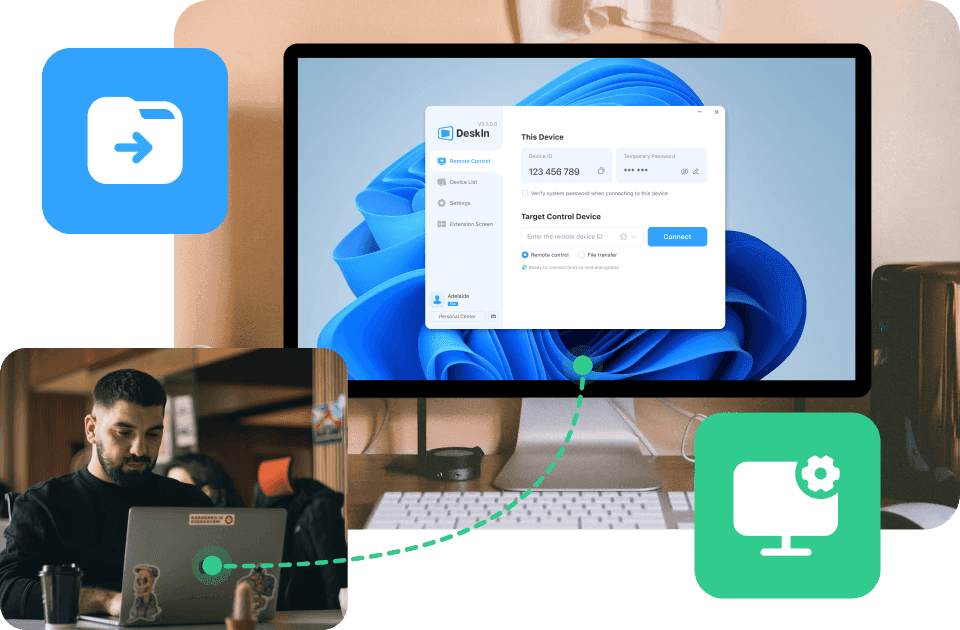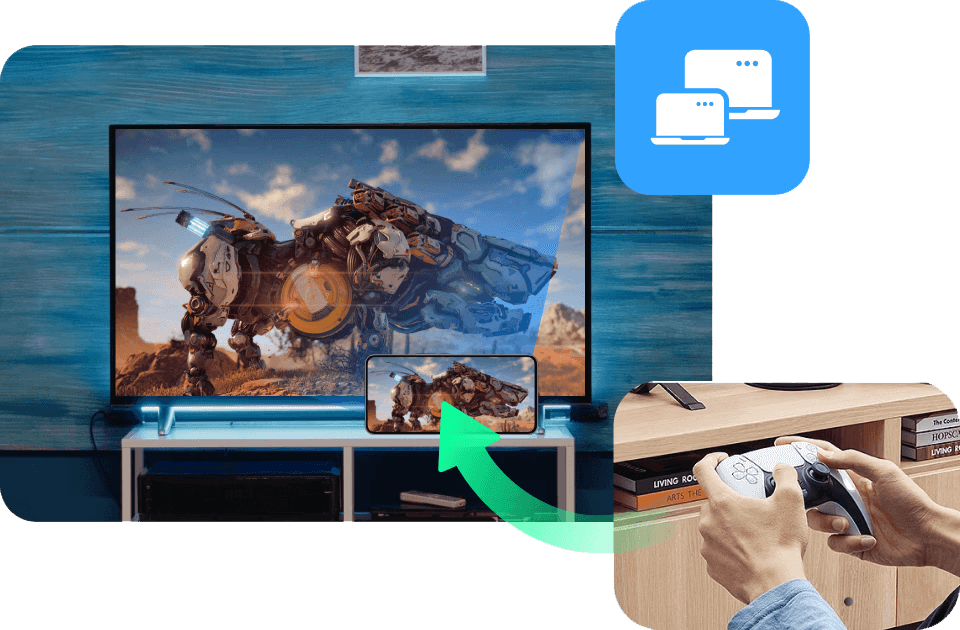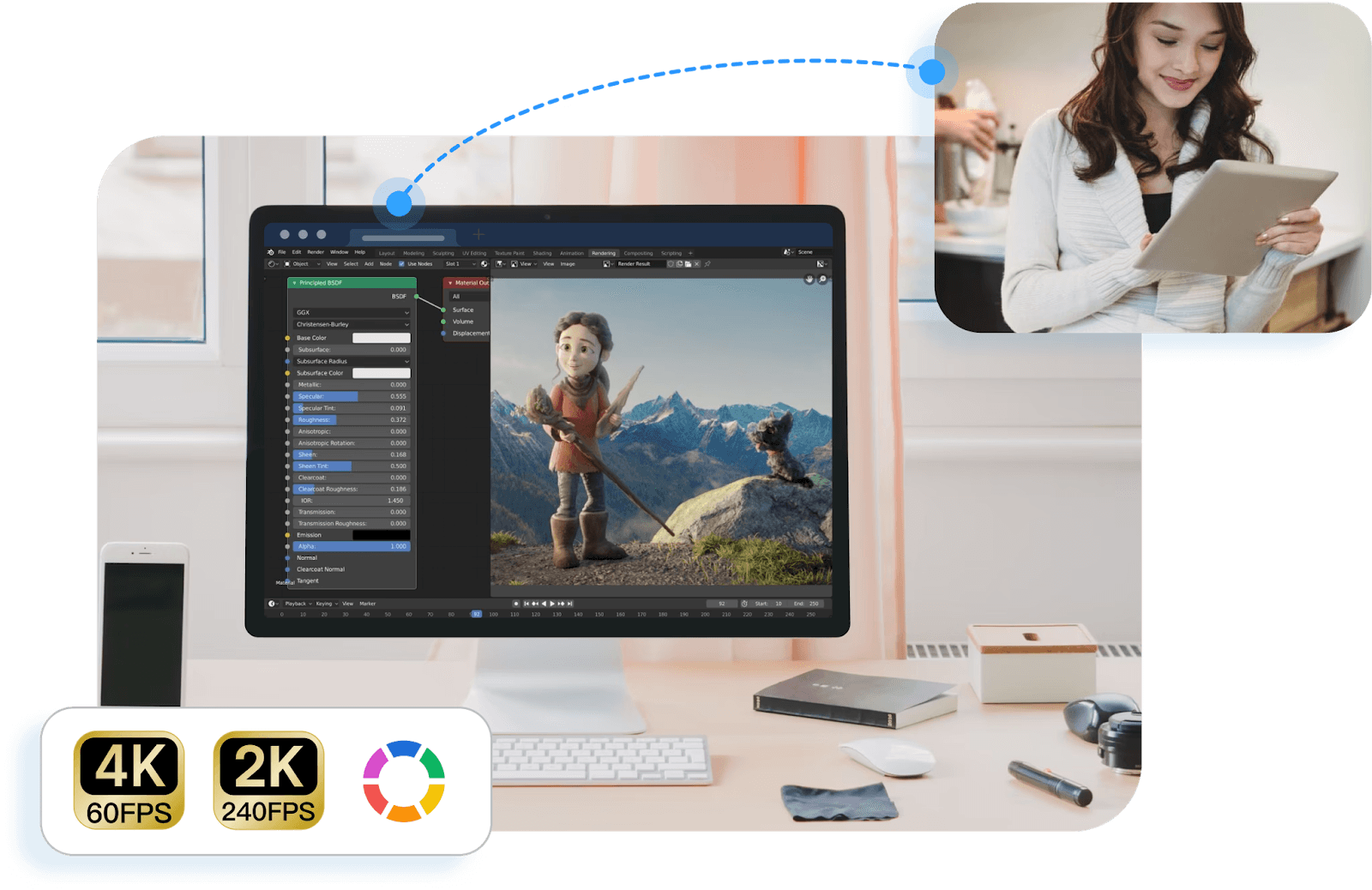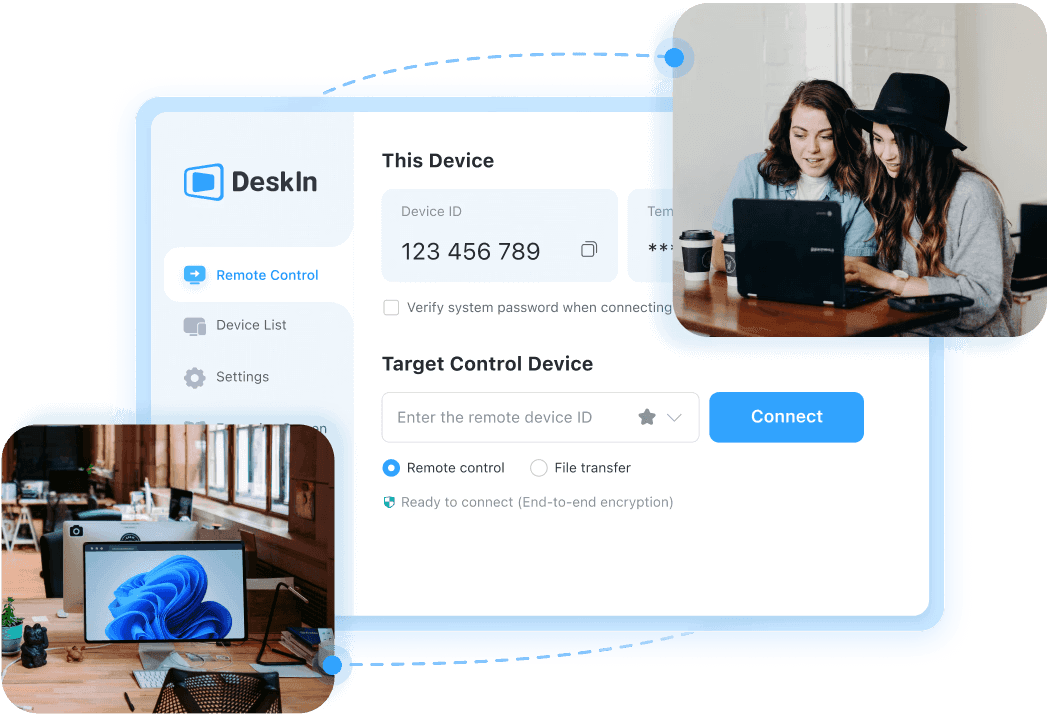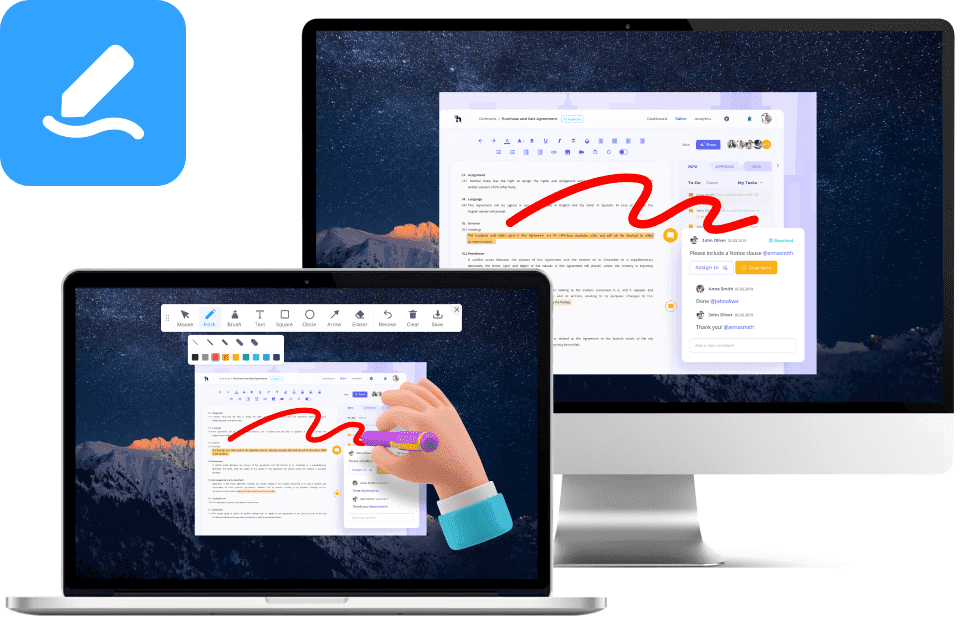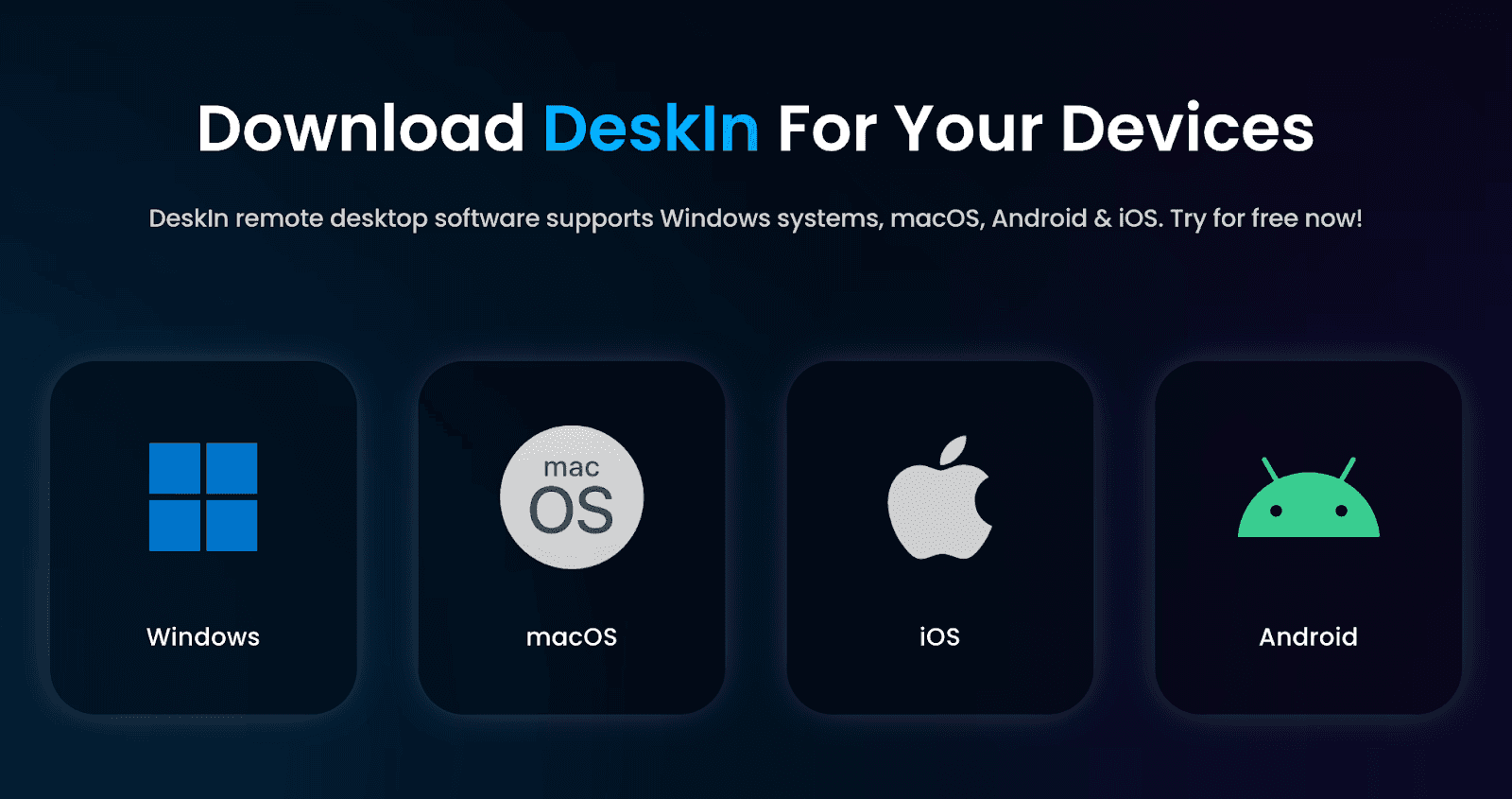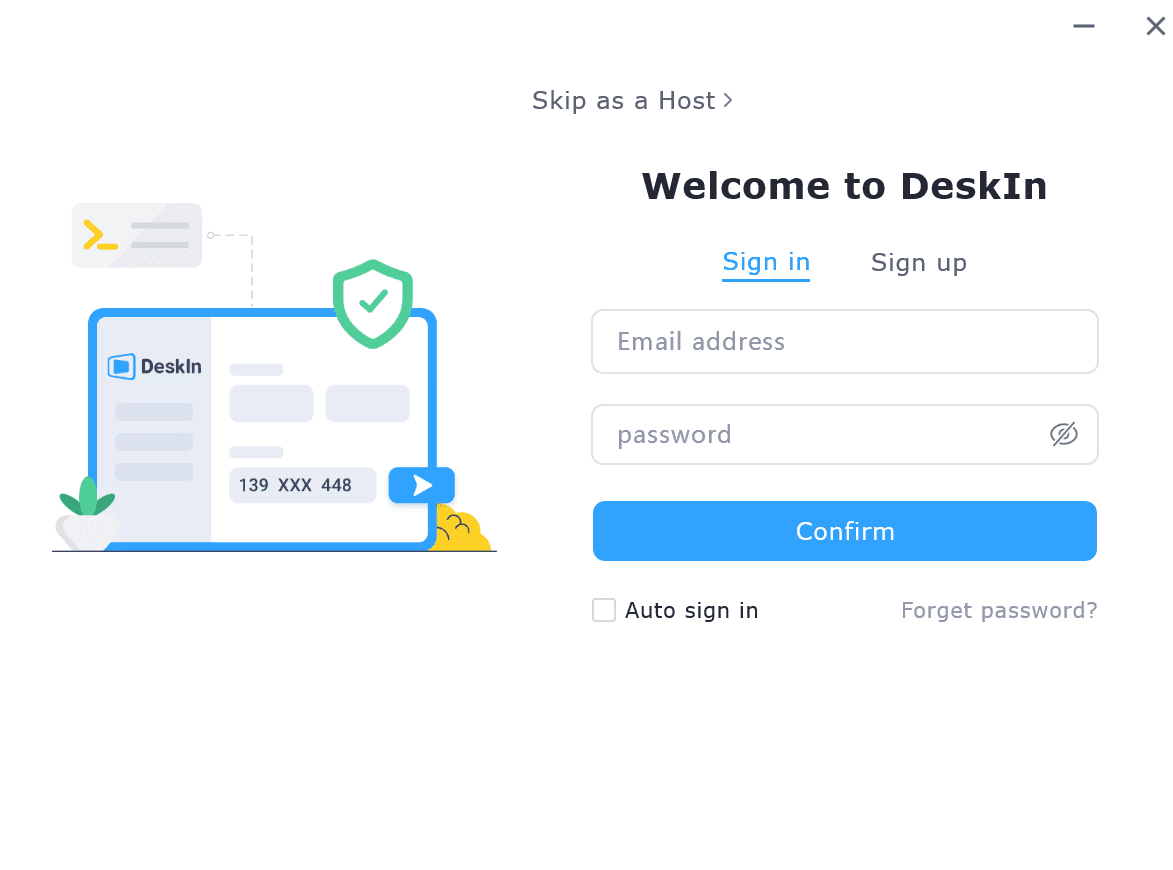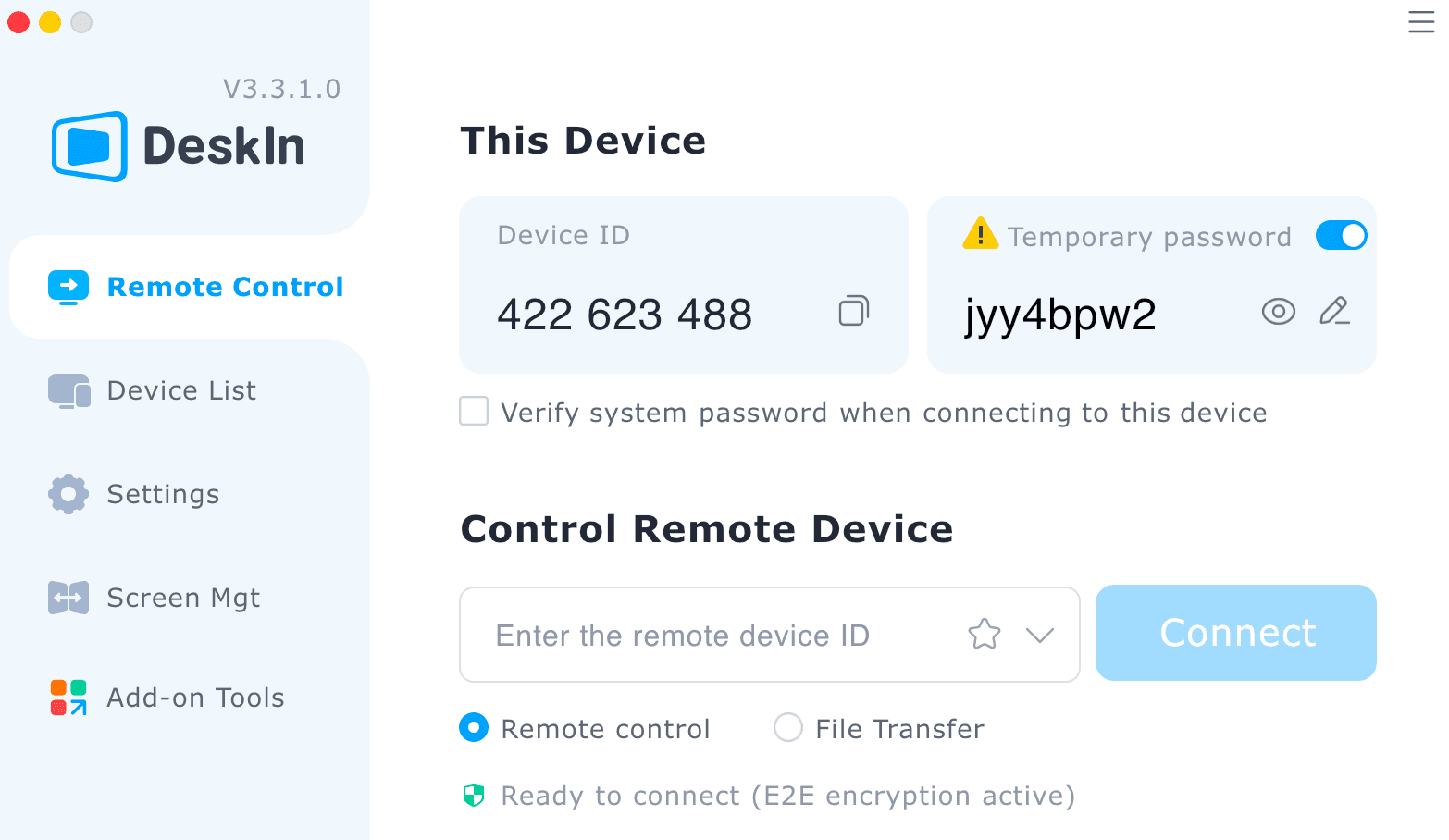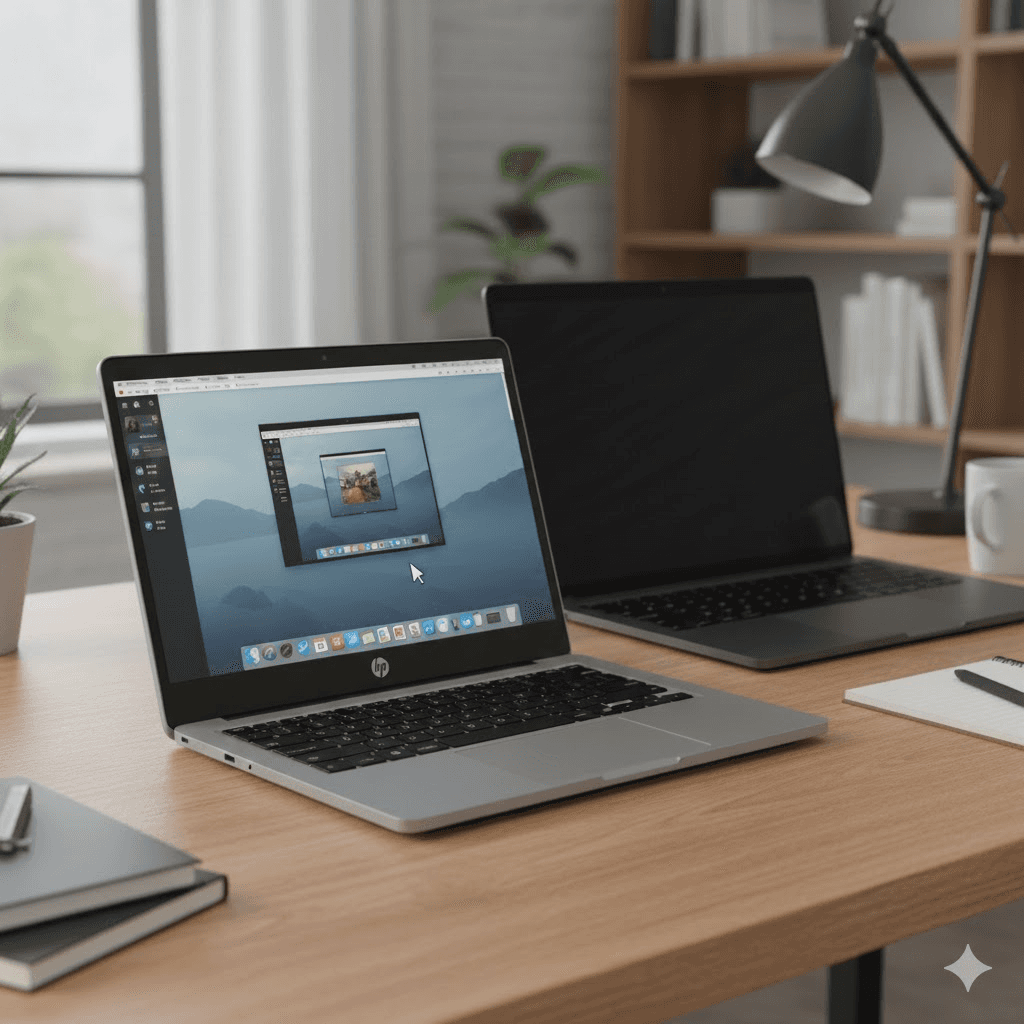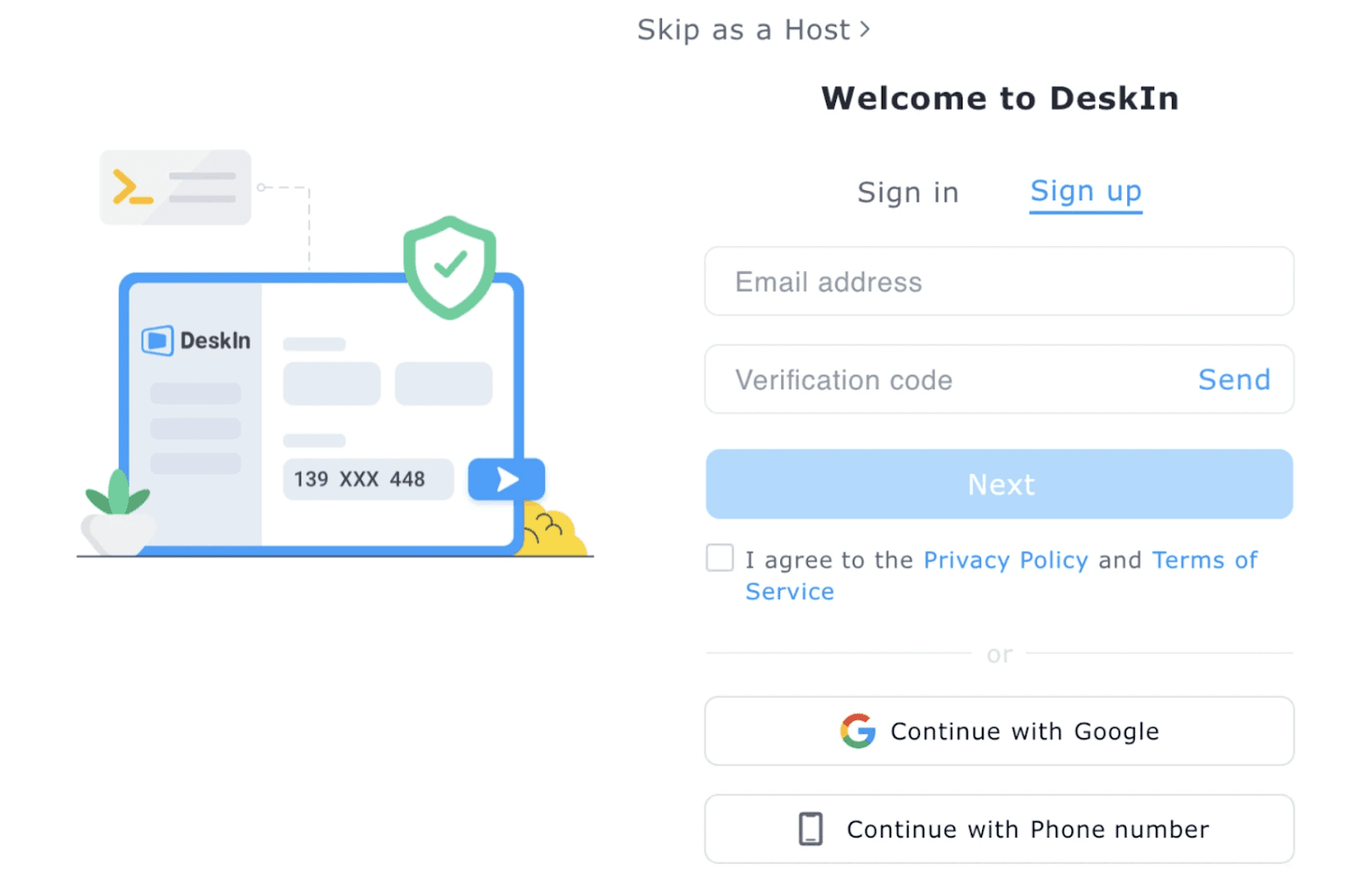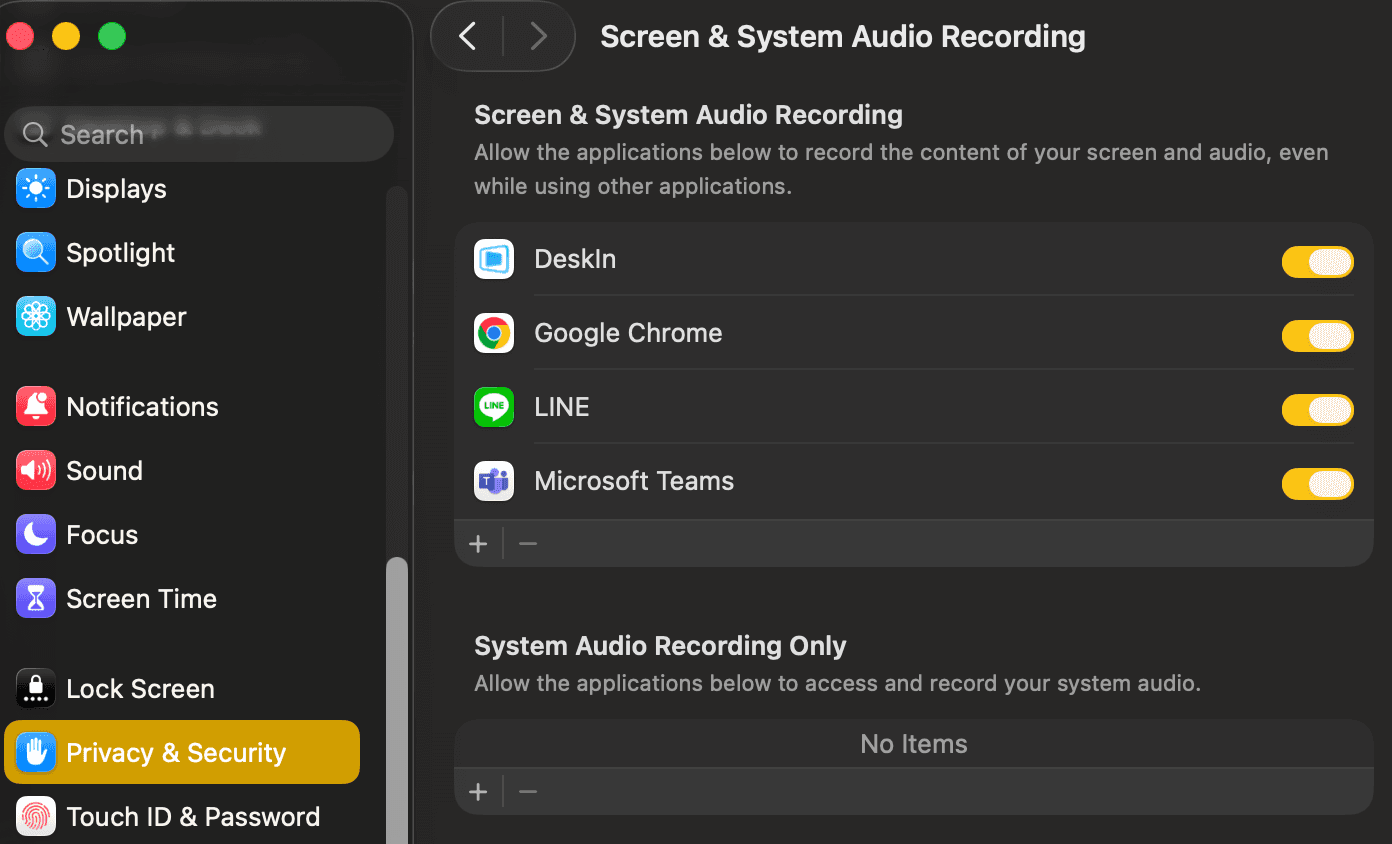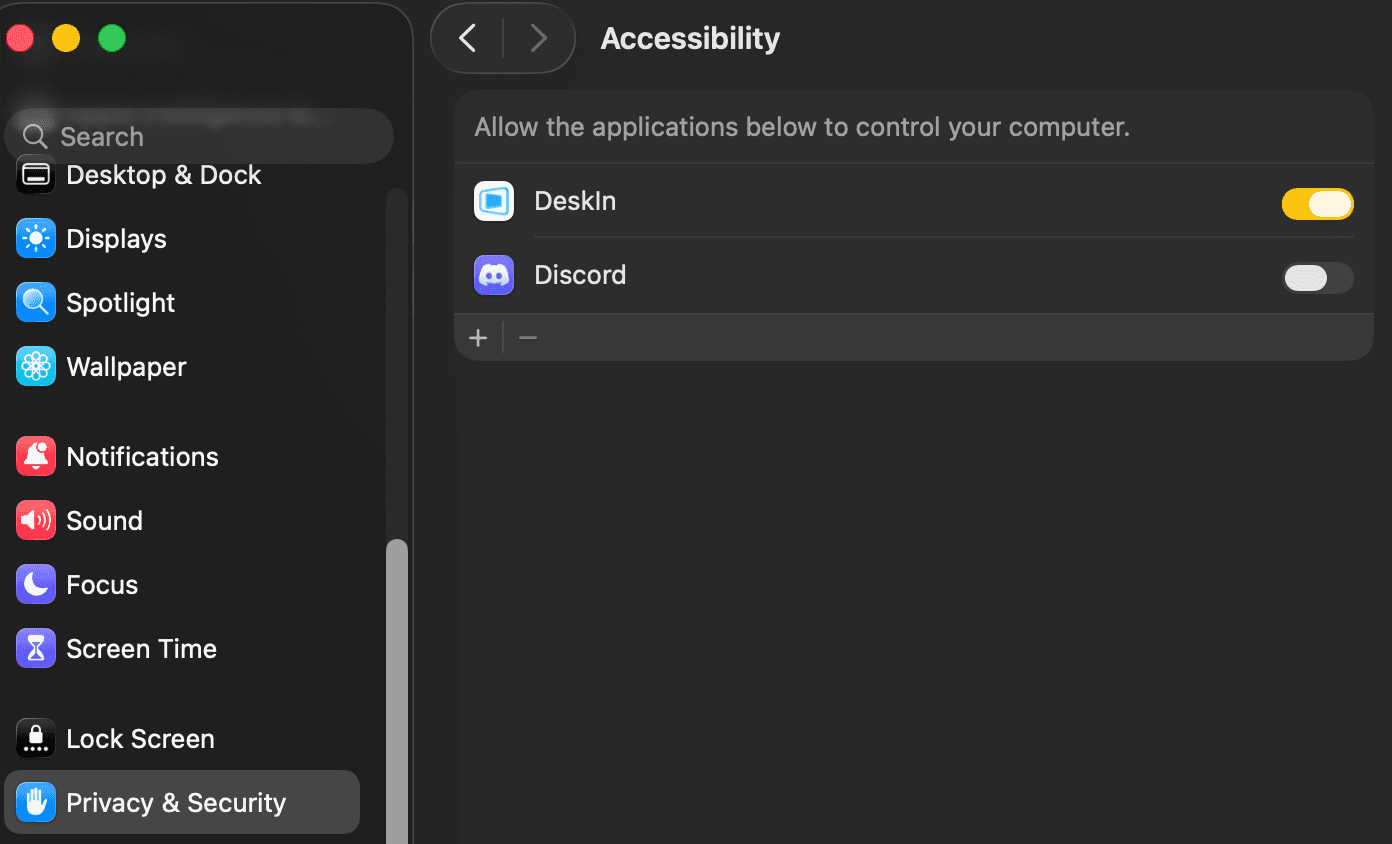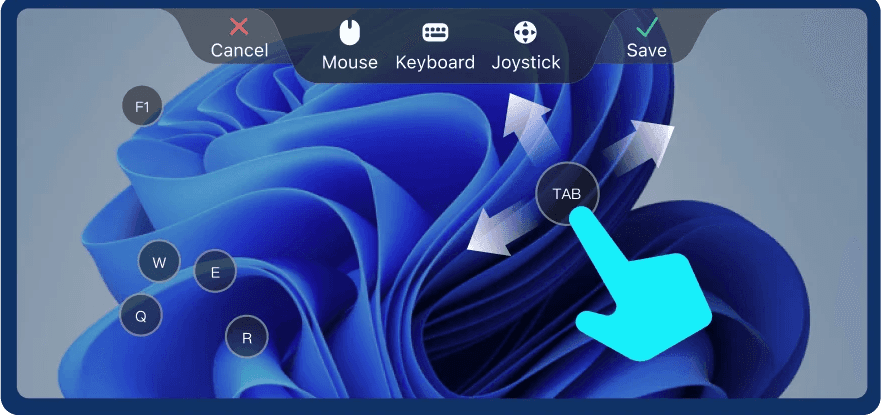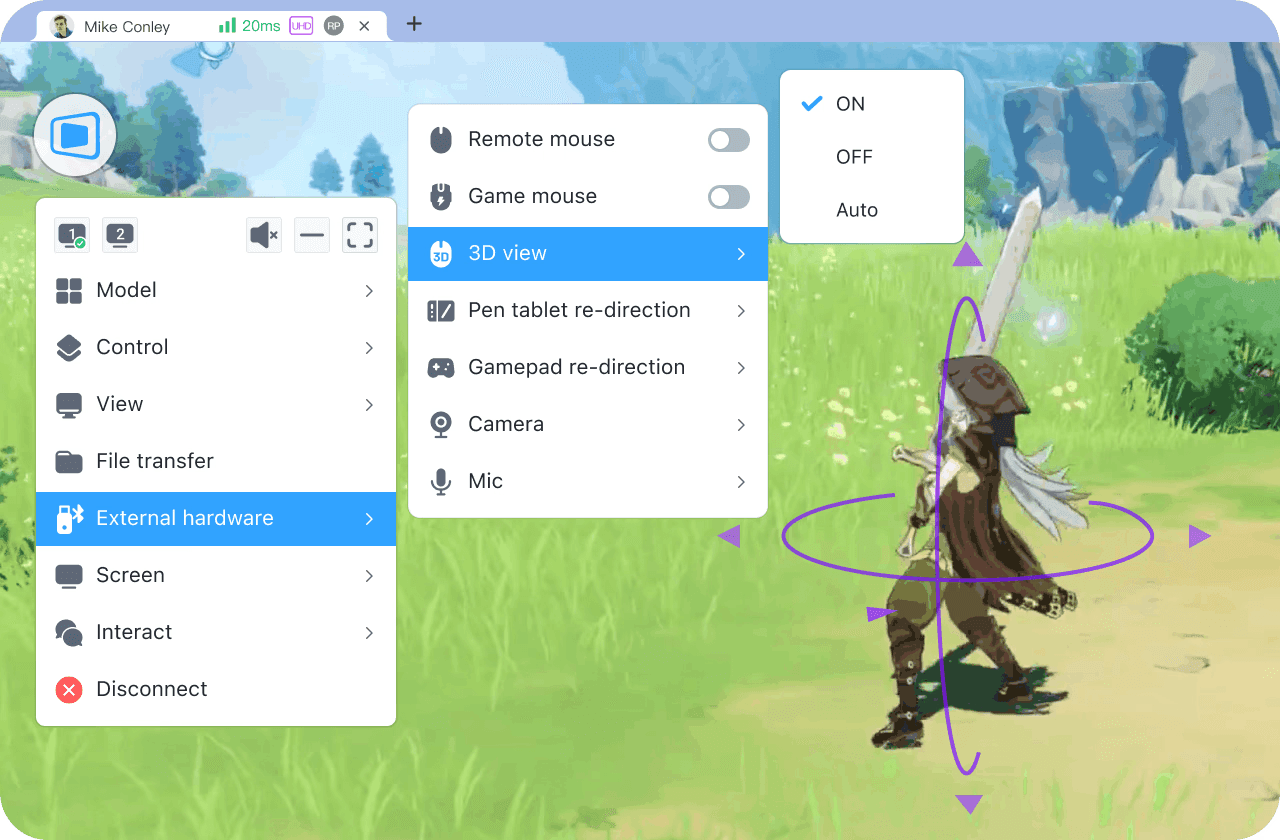Mirroring Android to PC can be highly useful in everyday and professional scenarios. Whether you're mirroring from your Android mobile to PC, to browse, watch videos, and play mobile games on a larger screen, or mirroring screen during a meeting, responding to messages while working, screen mirroring offers both convenience and enhanced productivity.
In this article, we will explore 4 reliable methods to instead screen sharing via USB, and mirror your Android screen to a PC wirlessly. These options vary in complexity and functionality, allowing you to choose the approach that best fits your needs. Ready to get started? Let's read on and find the best method!
Related Reading:
1. Connect Android Phone to PC Wirelessly via DeskIn
For smooth, rarely getting errors, and reliable screen mirroring experience, using a professional mirror screen app like DeskIn is highly recommended. It supports a wide range of operating systems, including Android and Windows, from different versions, making it a versatile tool for different users.
This best screen mirroring App also allows you to wirelessly mirror your Android phone to a larger screen, helping you work, present, or play more effectively. With up to 4K image quality and ultra-low latency under 40 ms, the experience can be smooth and responsive.


🏆 Key Features of DeskIn
4K Ultra HD + Low Latency (<40ms): Perfect for gaming and presentations.
Rarely Errors: Operate smoothly and seldom get errors while screen sharing.
Multi-OS Support: Works across different versions of Android and Windows.
User-Friendly Interface: Simple enough for beginners, powerful for pros.
One-Click Wireless Connection: No cables, no complicated setup.
Secure Remote Access: 256-bit encrypted connections for safety.
Extra Tools: Offers other features like remote control, virtual screens, remote camera access, and multi-screen expansion.
With an intuitive interface, it is easy to set up DeskIn. Simply scan a QR code or tap to connect wirelessly, no technical skills needed. Let's see how it works.
Step 1. Download and Install DeskIn
Visit the official DeskIn website on your Android device and your PC. Download the right version for each device and follow the steps to install DeskIn.

Step 2. Create and Log in to Your DeskIn Account
Log in to the same account on both your devices. If you are new to DeskIn, simply create an account. Then complete the log-in process.
Step 3. Mirror Android to PC
Launch DeskIn on both your Android and PC. Then you can choose to scan a QR code or tap to mirror your Android to PC.
Scan a QR code: On your PC, go to "Screen Mgt". On your Android phone, click on the "scan" button on the top right, then scan the QR code on your DeskIn PC.

Use a Tap: On your Android phone, go to "Remote Control". Select "Screen Mirroring" and go confirm. Just wait for a second, DeskIn will automatically cast your Android to PC.

You May Also Need:
2. Mirror Android to PC without Apps by Built-in Feature [Windows 11/10]
If you're a Windows 11 (version 22H2 or later) user, you can cast your Android to Windows laptop wirelessly using the built-in Wireless Display feature. This free solution enables you to project your Android phone's display directly to your PC.
While "Projecting to this PC" Feature is convenient, this method has some limitations, like occasional lag and compatibility issues with older devices. If your Windows version is old, like Windows 7, you should consider the first method, DeskIn, which supports all versions.
If you would like to give it a go, before getting started, make sure your Android device and PC are on the same Wi-Fi network. Then follow the instructions below to mirror Android to PC.
Step 1. Enable the Wireless Display Feature
On you PC, go to "Start" > "Settings" > "System" > "Projecting to this PC".
Choose "Optional features" under Add the " Wireless Display" optional feature to project to this PC.
Click "View Features". Then search for "wireless display".
Tick the box next to "Wireless display". Then click "Next" > "Install".
When finished, back to the "Projecting to this PC" page in settings.
Step 2. Configure Settings
On the "Projecting to this PC" page, tweak the settings as the picture below.

Step 3. Cast Android to PC
On your Android device, go to Quick Settings". Then look for settings like "Cast Screen", "Smart View", or "Mirroring" (the settings may vary due to different versions)
Tap the setting. Then you will see your PC's name on the list.
Choose the PC's name. Then approve the connection on your PC.

More to Discover:

3. Mirror Galaxy Phone to Laptop by Link to Windows [Samsung]
Samsung's built-in "Link to Windows" app seamlessly integrates your Galaxy phone with your PC. We can mirror our phone screen, check notifications, transfer files/media, reply to messages/calls, use mobile apps directly on our PC, sync files across devices, and merge calendars—all while running up to 5 apps simultaneously.
To mirror phone to laptop with "Link to Windows":
STEP 1: Download and open the "Phone Link" app on your Windows PC (Preinstalled on Windows 11 or via Microsoft Store).

STEP 2: Select "Open phone screen" in Phone Link, then tap "Start Now" on your Samsung phone to grant screen-sharing permissions.
STEP 3: Your Android screen now mirrors to your PC—browse apps, adjust settings, and drag files between devices.
Note: On some devices, the "Open phone screen" option may appear as "Phone Screen".
4. Screen Mirroring Android to PC via Scrcpy [Open-Source]
For tech-savvy users, Scrcpy is a great open-source solution. Unlike most apps, it works via ADB (Android Debug Bridge), allowing both USB and wireless connections without requiring root access or installing anything on your phone.
Compatible with Windows, macOS, and Linux, Scrcpy delivers sharp 1080p mirroring with impressively low latency (35~70ms). It is perfect for smooth gaming or movie watching. However, the setup involves enabling USB debugging and running commands, which might be tricky for beginners.
If you're comfortable with developer tools, Scrcpy offers free, high-performance mirroring without ads or lag. But if you prefer a simpler solution, check out other solutions.
STEP 1: Download scrcpy from GitHub and extract the folder to your computer.
STEP 2: On your Android, go to "Settings" > "About phone", tap "Build number" 7 times to unlock Developer Options. Then, go to "Developer Options" and turn on "USB debugging".

STEP 3: Use a USB cable to connect your Android to the PC. If prompted, allow USB debugging permission on your phone.
STEP 4: On your PC, open the scrcpy folder and double-click "scrcpy.exe". Scrcpy will then recognize your device automatically, allowing you to start mirroring your Android screen to your PC right away.
5 Bonus Tools to Mirror Android to PC
After introducing the top 4 Android casting tools, if you still need alternatives, we've prepared 5 more options below—ranging from free utilities to premium solutions with advanced features. While these offer flexibility, we strongly recommend returning to DeskIn as your primary choice: It delivers high-definition mirroring, ultra-low latency, zero lag, and rare connection failures, making it the best app to share phone to pc reliably.

Free Tools to Mirror Android

Parsec
It offers a free version with 60FPS ultra-HD streaming, enabling you to play games seamlessly across devices without lag or latency, making it the best choice for games mirroring due to its peer-to-peer architecture and near-real-time responsiveness.
LetsView
It is a free, ad-free tool that includes screen recording during mirroring and simplifies connections via direct pairing, QR codes, or passkeys, supporting cross-platform use between Android, iOS, Windows, and Mac for presentations or entertainment.
AirDroid
It enables free screen sharing over WiFi or cellular networks with low latency, though its registration process can be cumbersome. It also allows remote control of Android/iOS devices from a PC but limits advanced features (like touch control) to its paid tier.
For users seeking to screen mirror Android to PC for free, these tools provide flexible options tailored to gaming, productivity, or casual use.
Paid Tools with More Features

Miracast
It delivers high-quality video and audio streaming with support for surround sound formats, offers full HD resolution (and even 4K UHD in specific scenarios), and allows multiple devices to connect simultaneously to the same display for collaborative viewing or presentations, leveraging native wireless protocols without cables.
AirServer
It enables high-definition, 60 FPS mirroring with ultra-low latency, requires no third-party apps on client devices since all necessary features are built into its receiver software, and supports simultaneous mirroring sessions from multiple clients by intelligently scaling and arranging each feed to minimize unused screen space ("black bars").
FAQs About Mirroring Android to PC
Can I Mirror My Phone to My Laptop without WIFI?
You can mirror your phone to your laptop without Wi-Fi using a USB cable:
Scrcpy (Free):
Open-source tool for Windows/macOS/Linux. Plug in via USB, enable USB debugging, and mirror instantly with near-zero latency.
Vysor (Freemium):
USB-tether for screen mirroring on any OS. Free version works via USB. Pro version unlocks wireless and HD.
Why Can't I See My PC on Screen Mirroring?
Way 1: Ensure "Wireless Display" is enabled in Windows Settings > System > Projecting to this PC.
Way 2: Confirm both devices share the same WiFi network.
Way 3: Verify your Windows version supports "Connect to a wireless display".
Way 4: Run Windows Troubleshooter (Settings > Update & Security > Troubleshoot).
Way 5: Restart your PC and Android device.
Way 6: Update your display drivers via Device Manager.
Conclusion
Mirroring your Android to a PC opens up new possibilities, whether for work, gaming, or entertainment. While built-in options like Wireless Display are convenient for Windows users and Scrcpy offers powerful control, the easiest and most reliable solution is a professional app like DeskIn.
With cross-platform support (Android, Windows, macOS, iOS), 4K quality, and near-zero latency, DeskIn makes screen mirroring effortless. Also, only 3 steps are required to set up the mirroring, making the setup process easy and efficient. Ready for a seamless big-screen experience? Try DeskIn today and cast your Android to PC in seconds!

Mirroring Android to PC can be highly useful in everyday and professional scenarios. Whether you're mirroring from your Android mobile to PC, to browse, watch videos, and play mobile games on a larger screen, or mirroring screen during a meeting, responding to messages while working, screen mirroring offers both convenience and enhanced productivity.
In this article, we will explore 4 reliable methods to instead screen sharing via USB, and mirror your Android screen to a PC wirlessly. These options vary in complexity and functionality, allowing you to choose the approach that best fits your needs. Ready to get started? Let's read on and find the best method!
Related Reading:
1. Connect Android Phone to PC Wirelessly via DeskIn
For smooth, rarely getting errors, and reliable screen mirroring experience, using a professional mirror screen app like DeskIn is highly recommended. It supports a wide range of operating systems, including Android and Windows, from different versions, making it a versatile tool for different users.
This best screen mirroring App also allows you to wirelessly mirror your Android phone to a larger screen, helping you work, present, or play more effectively. With up to 4K image quality and ultra-low latency under 40 ms, the experience can be smooth and responsive.


🏆 Key Features of DeskIn
4K Ultra HD + Low Latency (<40ms): Perfect for gaming and presentations.
Rarely Errors: Operate smoothly and seldom get errors while screen sharing.
Multi-OS Support: Works across different versions of Android and Windows.
User-Friendly Interface: Simple enough for beginners, powerful for pros.
One-Click Wireless Connection: No cables, no complicated setup.
Secure Remote Access: 256-bit encrypted connections for safety.
Extra Tools: Offers other features like remote control, virtual screens, remote camera access, and multi-screen expansion.
With an intuitive interface, it is easy to set up DeskIn. Simply scan a QR code or tap to connect wirelessly, no technical skills needed. Let's see how it works.
Step 1. Download and Install DeskIn
Visit the official DeskIn website on your Android device and your PC. Download the right version for each device and follow the steps to install DeskIn.

Step 2. Create and Log in to Your DeskIn Account
Log in to the same account on both your devices. If you are new to DeskIn, simply create an account. Then complete the log-in process.
Step 3. Mirror Android to PC
Launch DeskIn on both your Android and PC. Then you can choose to scan a QR code or tap to mirror your Android to PC.
Scan a QR code: On your PC, go to "Screen Mgt". On your Android phone, click on the "scan" button on the top right, then scan the QR code on your DeskIn PC.

Use a Tap: On your Android phone, go to "Remote Control". Select "Screen Mirroring" and go confirm. Just wait for a second, DeskIn will automatically cast your Android to PC.

You May Also Need:
2. Mirror Android to PC without Apps by Built-in Feature [Windows 11/10]
If you're a Windows 11 (version 22H2 or later) user, you can cast your Android to Windows laptop wirelessly using the built-in Wireless Display feature. This free solution enables you to project your Android phone's display directly to your PC.
While "Projecting to this PC" Feature is convenient, this method has some limitations, like occasional lag and compatibility issues with older devices. If your Windows version is old, like Windows 7, you should consider the first method, DeskIn, which supports all versions.
If you would like to give it a go, before getting started, make sure your Android device and PC are on the same Wi-Fi network. Then follow the instructions below to mirror Android to PC.
Step 1. Enable the Wireless Display Feature
On you PC, go to "Start" > "Settings" > "System" > "Projecting to this PC".
Choose "Optional features" under Add the " Wireless Display" optional feature to project to this PC.
Click "View Features". Then search for "wireless display".
Tick the box next to "Wireless display". Then click "Next" > "Install".
When finished, back to the "Projecting to this PC" page in settings.
Step 2. Configure Settings
On the "Projecting to this PC" page, tweak the settings as the picture below.

Step 3. Cast Android to PC
On your Android device, go to Quick Settings". Then look for settings like "Cast Screen", "Smart View", or "Mirroring" (the settings may vary due to different versions)
Tap the setting. Then you will see your PC's name on the list.
Choose the PC's name. Then approve the connection on your PC.

More to Discover:

3. Mirror Galaxy Phone to Laptop by Link to Windows [Samsung]
Samsung's built-in "Link to Windows" app seamlessly integrates your Galaxy phone with your PC. We can mirror our phone screen, check notifications, transfer files/media, reply to messages/calls, use mobile apps directly on our PC, sync files across devices, and merge calendars—all while running up to 5 apps simultaneously.
To mirror phone to laptop with "Link to Windows":
STEP 1: Download and open the "Phone Link" app on your Windows PC (Preinstalled on Windows 11 or via Microsoft Store).

STEP 2: Select "Open phone screen" in Phone Link, then tap "Start Now" on your Samsung phone to grant screen-sharing permissions.
STEP 3: Your Android screen now mirrors to your PC—browse apps, adjust settings, and drag files between devices.
Note: On some devices, the "Open phone screen" option may appear as "Phone Screen".
4. Screen Mirroring Android to PC via Scrcpy [Open-Source]
For tech-savvy users, Scrcpy is a great open-source solution. Unlike most apps, it works via ADB (Android Debug Bridge), allowing both USB and wireless connections without requiring root access or installing anything on your phone.
Compatible with Windows, macOS, and Linux, Scrcpy delivers sharp 1080p mirroring with impressively low latency (35~70ms). It is perfect for smooth gaming or movie watching. However, the setup involves enabling USB debugging and running commands, which might be tricky for beginners.
If you're comfortable with developer tools, Scrcpy offers free, high-performance mirroring without ads or lag. But if you prefer a simpler solution, check out other solutions.
STEP 1: Download scrcpy from GitHub and extract the folder to your computer.
STEP 2: On your Android, go to "Settings" > "About phone", tap "Build number" 7 times to unlock Developer Options. Then, go to "Developer Options" and turn on "USB debugging".

STEP 3: Use a USB cable to connect your Android to the PC. If prompted, allow USB debugging permission on your phone.
STEP 4: On your PC, open the scrcpy folder and double-click "scrcpy.exe". Scrcpy will then recognize your device automatically, allowing you to start mirroring your Android screen to your PC right away.
5 Bonus Tools to Mirror Android to PC
After introducing the top 4 Android casting tools, if you still need alternatives, we've prepared 5 more options below—ranging from free utilities to premium solutions with advanced features. While these offer flexibility, we strongly recommend returning to DeskIn as your primary choice: It delivers high-definition mirroring, ultra-low latency, zero lag, and rare connection failures, making it the best app to share phone to pc reliably.

Free Tools to Mirror Android

Parsec
It offers a free version with 60FPS ultra-HD streaming, enabling you to play games seamlessly across devices without lag or latency, making it the best choice for games mirroring due to its peer-to-peer architecture and near-real-time responsiveness.
LetsView
It is a free, ad-free tool that includes screen recording during mirroring and simplifies connections via direct pairing, QR codes, or passkeys, supporting cross-platform use between Android, iOS, Windows, and Mac for presentations or entertainment.
AirDroid
It enables free screen sharing over WiFi or cellular networks with low latency, though its registration process can be cumbersome. It also allows remote control of Android/iOS devices from a PC but limits advanced features (like touch control) to its paid tier.
For users seeking to screen mirror Android to PC for free, these tools provide flexible options tailored to gaming, productivity, or casual use.
Paid Tools with More Features

Miracast
It delivers high-quality video and audio streaming with support for surround sound formats, offers full HD resolution (and even 4K UHD in specific scenarios), and allows multiple devices to connect simultaneously to the same display for collaborative viewing or presentations, leveraging native wireless protocols without cables.
AirServer
It enables high-definition, 60 FPS mirroring with ultra-low latency, requires no third-party apps on client devices since all necessary features are built into its receiver software, and supports simultaneous mirroring sessions from multiple clients by intelligently scaling and arranging each feed to minimize unused screen space ("black bars").
FAQs About Mirroring Android to PC
Can I Mirror My Phone to My Laptop without WIFI?
You can mirror your phone to your laptop without Wi-Fi using a USB cable:
Scrcpy (Free):
Open-source tool for Windows/macOS/Linux. Plug in via USB, enable USB debugging, and mirror instantly with near-zero latency.
Vysor (Freemium):
USB-tether for screen mirroring on any OS. Free version works via USB. Pro version unlocks wireless and HD.
Why Can't I See My PC on Screen Mirroring?
Way 1: Ensure "Wireless Display" is enabled in Windows Settings > System > Projecting to this PC.
Way 2: Confirm both devices share the same WiFi network.
Way 3: Verify your Windows version supports "Connect to a wireless display".
Way 4: Run Windows Troubleshooter (Settings > Update & Security > Troubleshoot).
Way 5: Restart your PC and Android device.
Way 6: Update your display drivers via Device Manager.
Conclusion
Mirroring your Android to a PC opens up new possibilities, whether for work, gaming, or entertainment. While built-in options like Wireless Display are convenient for Windows users and Scrcpy offers powerful control, the easiest and most reliable solution is a professional app like DeskIn.
With cross-platform support (Android, Windows, macOS, iOS), 4K quality, and near-zero latency, DeskIn makes screen mirroring effortless. Also, only 3 steps are required to set up the mirroring, making the setup process easy and efficient. Ready for a seamless big-screen experience? Try DeskIn today and cast your Android to PC in seconds!


Play x Work
All at Once
DeskIn Remote Game
only $14.32 USD 🎉 Limited on July 16-31
Add promo code: deskinsummer1






